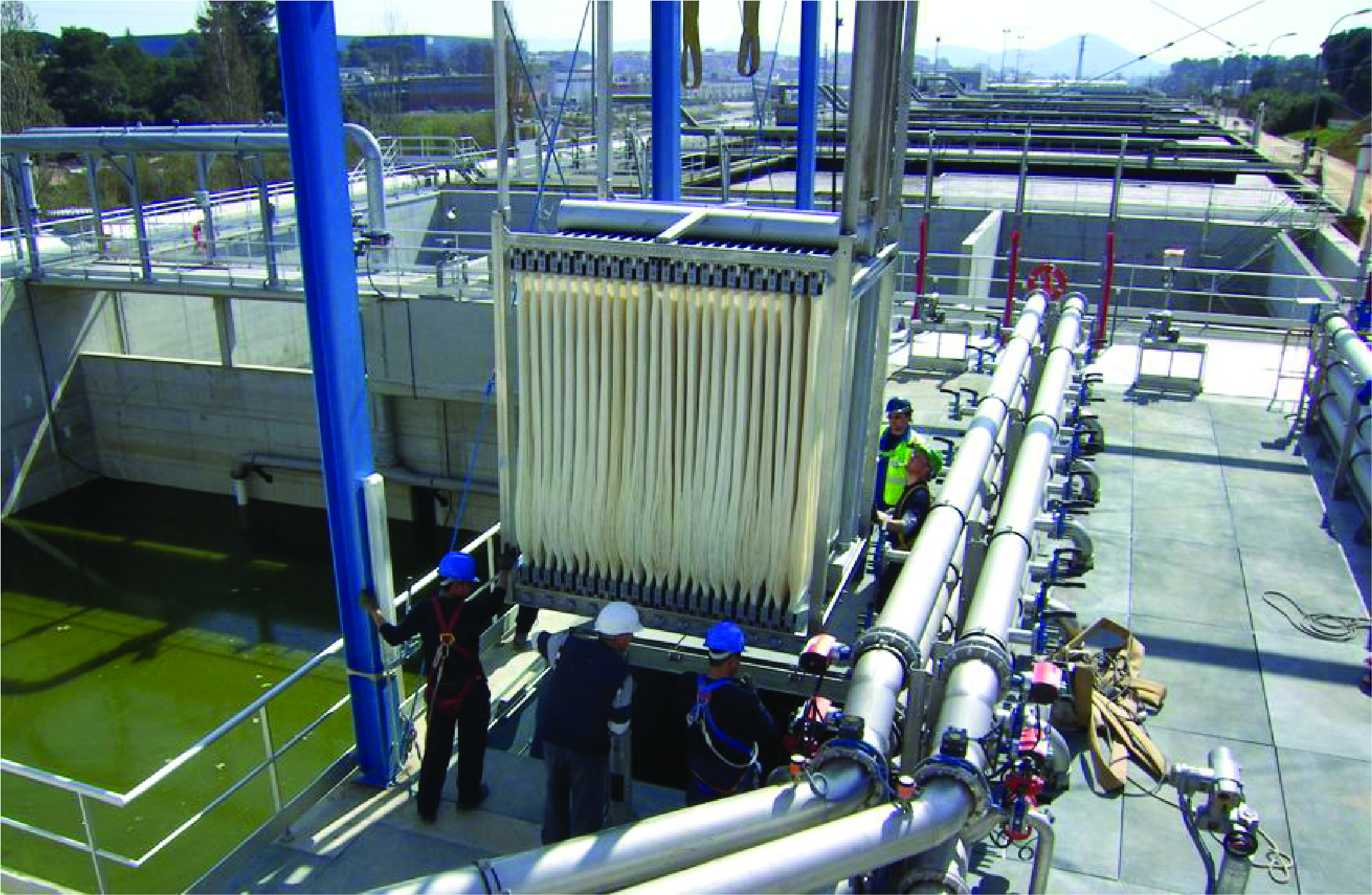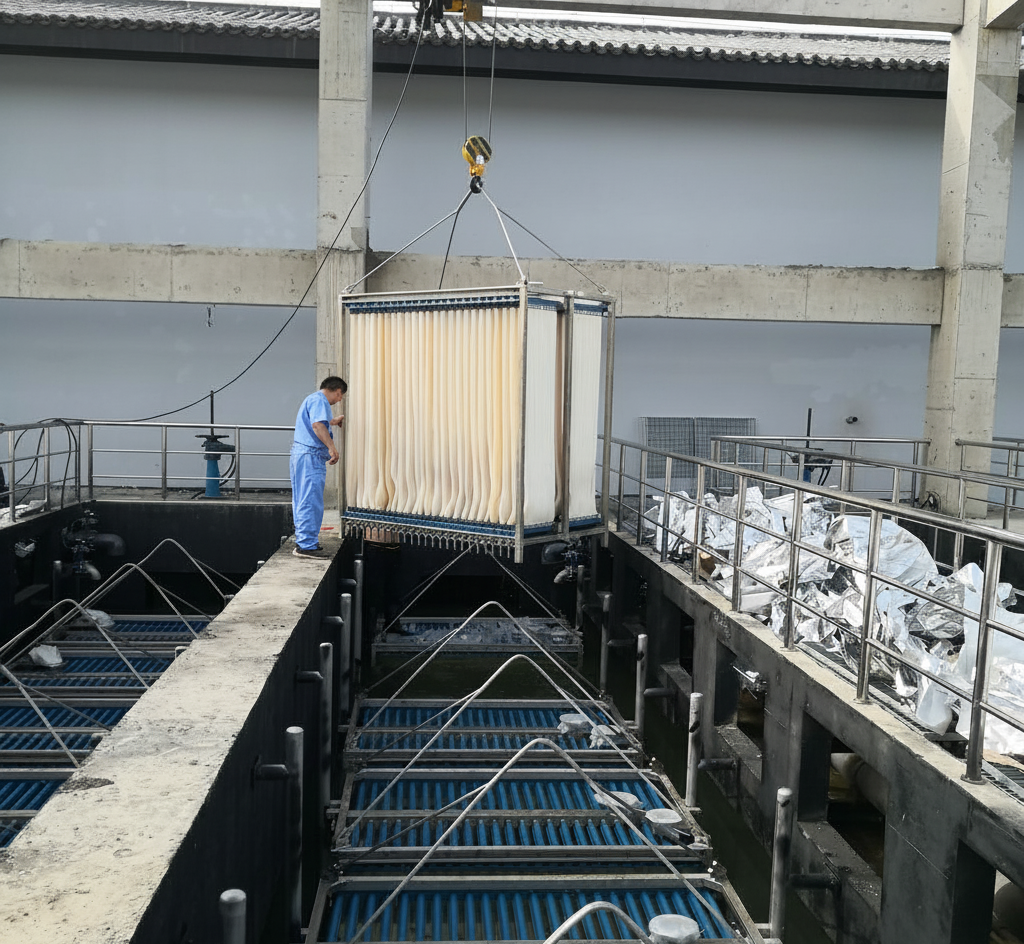
Bangladesh's rapid industrial growth and urban expansion have escalated the need for robust wastewater management. Membrane Bioreactor (MBR) systems are compact, high-efficiency solutions that deliver superior water quality while conserving space and resources. Kingsley expertise in deploying integrated MBR-based Effluent Treatment Plants (ETP) and Sewage Treatment Plants (STP) is setting a new benchmark for sustainable and compliant wastewater treatment in Bangladesh.
What is an MBR system, and how does it fit into ETP & STP frameworks?
Membrane Bioreactor (MBR) is a combined process that integrates biological treatment (like activated sludge) with membrane filtration. It is used extensively in both municipal and industrial wastewater treatment globally.
Advantages include:
- High-quality effluent, free from bacteria, suspended solids, and pathogens—making it ideal for reuse or further treatment via Reverse Osmosis.
- Compact footprint—MBR systems eliminate bulky clarifiers and allows higher biomass concentration, reducing space needs by up to 50% compared to conventional systems.
- Automation-friendly and robust—minimizes manual intervention and suits decentralized sites.
- Independent control of solids, with enhanced performance in COD/BOD removal and nutrient management.
Why are MBR systems ideal for Bangladesh’s ETP and STP needs
-
Space-saving in dense industrial complexes
Industrial plots in Bangladesh, such as garment factories and in economic zones, have limited layouts. Our MBR-based STP at the BGMEA Complex tackled this by leveraging an integrated module design—reducing civil work and footprint without sacrificing performance.
-
Top-tier effluent quality
Kingsley’s BGMEA STP delivered outstanding results—eliminating coliforms, lowering COD and BOD significantly, and producing effluent suitable for reuse such as gardening, cleaning, or even RO feed.
-
Reliable automation & low-sludge approach
These systems feature automated operation, reduced sludge generation, and low operating costs (about BDT 5–7.5 per cubic meter; roughly 0.0065–0.0075 BDT per liter).
MBR vs Conventional Activated Sludge Process (ASP) and MBBR
Here’s a quick comparison of treatment technologies commonly deployed in Bangladesh:
Treatment Technology |
Description |
Advantages |
Limitations |
| MBR (Membrane Bioreactor) | Biological + Membrane Filtration | High effluent quality, compact system, automation-capable | Higher initial cost, membrane fouling risk |
| MBBR (Moving Bed Biofilm Reactor) | Biofilm media in aeration tank | No clogging, compact, efficient BOD/COD reduction | Moderate effluent quality vs MBR |
| ASP (Activated Sludge Process) | Settling-based activated sludge | Proven tech, lower cost | Requires large area, more sludge, moderate quality |

Thus, MBR offers superior output quality, space efficiency, and reuse potential, albeit with higher capital and membrane maintenance needs.
Kingsley Group’s Unique Edge
Being the pioneer in integrated MBR-based STP in Bangladesh, Kingsley Group has:
- Proven case studies (e.g., BGMEA STP) demonstrating exceptional effluent quality and regulatory compliance.
- Comprehensive service chain—from design and engineering to operation and green consultancy.
- Rich experience across ETP/STP/WTP/ZLD solutions for diverse industries (textile, pharma, hospitals, etc.).
- Focus on sustainability, automation, and future scalability to support Bangladesh’s evolving environmental landscape and Environmental regulations.
As Bangladesh marches toward sustainable industrial growth, Membrane Bioreactor (MBR) technology has emerged as a powerful wastewater treatment solution—delivering high effluent quality, space efficiency, automation, and reuse potential. Kingsley Group stands at the forefront—championing advanced MBR-based ETP and STP projects that not only comply with environmental standards but also add tangible value in O&M savings, operational efficiency, and future-readiness.
For businesses seeking reliable, compliant, and scalable wastewater solutions, Kingsley Group's MBR-integrated plants offer a win-win blend of innovation and sustainability.
FAQ
Q1. What is an ETP and STP?
- ETP: An Effluent Treatment Plant treats industrial wastewater by removing pollutants before environmental discharge or reuse.
- STP: A Sewage Treatment Plant treats domestic/municipal sewage, often using aerobic technologies like MBR, MBBR, and ASP.
Q2. How does MBR work?
MBR combines a biological reactor (traditionally activated sludge) with a membrane filtration unit. The membrane (micro- or ultrafiltration) retains biomass and pathogens, leading to clear permeate with high reuse potential.
Q3. What are the benefits of MBR?
Benefits include:
- High-quality, pathogen-free effluent
- Reduced footprint and civil cost
- Efficient BOD/COD and nutrient removal
- Lower sludge
- Automation-friendly setups
Q4. Can treated water be reused?
Absolutely. Kingsley’s MBR STP produces water that can be directly used for gardening, cleaning, car washing, or as RO feed for further recycling.
Q5. What about operating cost?
Kingsley’s project at BGMEA reported an operating cost of BDT 5–7.5 per m³ (~0.0065–0.0075 BDT per liter), with electricity being the main expense.
Q6. How to choose a wastewater treatment supplier in Bangladesh?
Key criteria include:
- DOE compliance and local regulation adherence
- Technology evaluation (MBR, MBBR, ASP)
- Proven track record and case studies
- Customization, scalability, O&M support
- Cost transparency
Kingsley checks all these boxes!
You must be logged in to post a comment.